
15mm axles are here to stay
In early May of this year, I was invited down to Colorado to check out new suspension products from RockShox. Among the forks on display were several models sporting 15mm thru axles, which was a bit of a surprise considering RockShox’s fairly strong anti-15mm stance when the new standard was introduced.
The whole thing got me thinking about 15mm axles and the forks they are part of, and when I get to thinking, I often get to writing. Here are some thoughts on the whole subject.
A brief lesson in contemporary history
Last year, I wrote a Gear Shots on one of Fox’s new 15mm thru axle forks – the 32 TALAS RLC 150. It was part of a new generation of forks that Fox developed in conjunction with Shimano, a new generation of forks that was designed to be stiffer and stronger than short to mid-range travel forks with 9mm quick release axles but not as burly or heavy as long-travel all-mountain, freeride and downhill forks using 20mm axles.
These new 15mm forks offered anywhere from 80mm to 150mm of travel, depending on the model, and were built for both the XC and slightly more amorphous “trail” categories. They were lighter all around, not just because the axle was smaller in diameter but because they were using 32mm stanchions compared to the 36mm (or larger) stanchions on all-mountain, freeride or downhill forks. That in turn meant smaller lower legs and less material inside the fork legs, all of which made for a lighter final product. When 15mm forks were introduced in 2008, Fox and Marzocchi were the only companies making them, and they quickly started showing up all over the place on new bikes.
Fox’s take on the 15mm thru axle concept, mated to a WTB 15mm hub.
Mark Fitzsimmons, MTB Race Manager for Fox Suspension, says that the development of the 15mm platform was a collaborative effort between two industry powerhouses: “Shimano knew we were interested in changing our current design and they met with us with some ideas and we worked together to come up with the 15QR.”
The result was a fork that was lighter than all-mountain or freeride forks and considerably stiffer than forks using a 9mm QR axle. They were not, however, as stiff as forks with a 20mm axle. According to Fitzsimmons, “we have received comments from Downieville-type racers (an enduro DH race in Northern California – Ed.) that they perceive [a 15mm fork] as not holding up to the same amount of stress as a 36 Float [with a 20mm axle]. It is not as stiff as a 36 but the million dollar question is, how stiff does a fork really have to be?”
Good question. The answer is directly tied to the intended use for a fork. Forks with a 9mm axle are well suited for light-weight applications like XC riding and racing, and light-duty trail riding. Stiffness is not the primary concern for these types of riding, but weight is. At the other end of the spectrum are all-mountain, freeride and downhill forks. Stiffness is paramount, while weight is a minor concern. 20mm axles made it possible to build forks that are significantly stiff under the most demanding riding conditions.
Sitting between those two extremes is a grey area – one where light weight and stiffness are equally important. The proverbial best of both worlds, as it were. Riders are pushing their equipment harder than the short-travel XC set but aren’t throwing down large, and are weight conscious because they are pedalling to the top. That’s where 15mm resides. Fox sees its 15mm platform as suited to “a bike or type of riding that is equally used for pedalling uphill as it is downhill,” says Fitzsimmons. “If a person can only afford one bike, they should not be told they can’t jump the bike or XC race it.”
The Fox TALAS 150 RLC 15mm fork. Stiff, capable, light suspension for people who pedal up and ride down. Within reason.
An entirely logical proposition, it would seem, and a product that should theoretically appeal to a large number of riders. When I wrote the original article, though, there was a lot of negativity on the nsmb.com bulletin boards. I suspect there was other griping about 15mm axles on the interweb, but I didn’t make a point of seeking it out.
People decried the new axle diameter, saying that this was yet another instance of the bike industry shoving an unwanted and unnecessary standard down the bike buying public’s collective throat. “Why force this on us, when 20mm is good enough?” was the common refrain. It was often followed up with, “What am I supposed to do with my 20mm hubs now?” From the way some people were acting, you’d think they were being forced, at gunpoint, to trade in their full suspension bikes for fully rigid fixed gear 29ers. Conspiracy theories abounded, but basically the main theme was that Evil Fork Companies were trying to screw Mountain Bikers. The horror, the horror…
Not surprisingly, Fox and Marzocchi didn’t lose a lot of sleep over the issue and turned out thousands of forks with 15mm axles. They also kept on making forks with 9mm axles and 20mm axles. Bike companies gobbled up the 15mm forks and spec’d them on their “trail” bikes because they were lighter than 20mm forks (or so people thought), making it easier to keep overall bike weight down and still offer lots of travel. And as we all know, more travel = more fun. Or something like that.
One suspension company didn’t worship at the 15mm altar at the time, however: RockShox. The SRAM subsidiary actually took a similar position to the naysayers on the whole 15mm issue. Not necessary, said the folks at RockShox, and the SRAM marketing juggernaut went into action to attest to the fact that 20mm was plenty good. Ads from RockShox / SRAM talked about the benefits of 20mm, and the fact that it could be made just as light as 15mm thanks to the new Maxle Lite axle. There were no 15mm forks in the RockShox line for 2009 or 2010. That all changed for the 2011 model year, though.
A change in the prevailing winds
When RockShox rolled out its latest crop of forks, sharp eyes noticed that several models sported a 15mm axle. You can now get RockShox Revelation, Sektor and Sid forks with 15mm axles, with anywhere from 150mm of travel all the way down to 80mm depending on the model.
The new crop of XC and trail forks from RockShox: (l to r) Revelation World Cup with carbon steerer / crown and 15mm axle, Sid with tapered carbon steerer / crown and 9mm axle, Sid with 1.125″ carbon steerer / crown and 9mm axle, and Sid with alloy steerer and 15mm axle.
“Sacrilege!” you say. “Sell outs!” you say. Bullshit, I say. There’s a perfectly logical, rational reason why RockShox changed its tune.
I got the official word on the new fork offerings at the 2011 RockShox product launch in Colorado from Sander Rigney, RockShox Product Manager for the company’s Performance Trail and XC categories. The response was a mix of realism and opportunity.
The realism part of the equation, according to Rigney, is that wheel makers aren’t particularly interested in making a light XC or trail wheel based around a 20mm axle. It’s overkill and overweight, as far as they’re concerned.
Whether or not that’s actually true is irrelevant. This, as is often the case, is a matter of perception. We ride in an age where everyone from the bike manufacturers all the way down to consumers are pushing for the lightest bike possible – even in the 5” or 6” travel range. That means building bikes with lighter parts, particularly wheel parts. If wheelmakers aren’t interested in making XC or trail-weight wheels or hubs to accommodate 20mm axles, then it doesn’t make sense for RockShox to turn out XC or trail forks with that axle size, regardless of how light the Maxle Lite may be. Pretty simple.
Another element of that story is market share. Bike manufacturers are spec’ing 15mm forks on their XC and trail bikes. Both Fox and Marzocchi make 15mm forks, and there was a real danger that RockShox would lose a sizeable portion of the 100 to 150mm-travel fork market to the other two companies if it didn’t start making what bike manufacturers were choosing to spec. RockShox doesn’t want to dwell on this part of the story, but it’s worth acknowledging.
The opportunity side of things is actually more positive. RockShox has been making thru-axle forks since it introduced the Psylo in 2001, and Rigney was quite emphatic when he said the company is a big proponent of thru axle technology. They see several advantages to running a thru axle over a 9mm QR – regardless of whether the axle is 15mm or 20mm. Ultimately, the addition of 15mm forks to the line-up gave RockShox a chance to built what it considered a class-leading fork and axle in the 15mm standard.
Contrary to what people may think, 15mm means more forks from RockShox, not fewer. Most of the forks in the Revelation and Sektor lines of trail forks come in 9mm QR dropouts and a 20mm thru-axle option – as well as the 15mm option. (Sid will be available in 15mm and 9mm.) Now, I may be misreading the situation, but it sounds an awful lot like the big bad bike industry’s not trying to screw honest, hard working riders – it’s giving them more choices. Say it isn’t so!
The introduction of 15mm axles also proved to be an opportunity for RockShox to refine its Maxle Lite quick release thru axle system. The adjustment knob used in earlier versions to adjust clamping force has been eliminated, and the whole axle was reengineered to cut weight. Those changes were also applied to the standard 20mm Maxle – a case of technology flowing up rather than down.
Maxle thru the ages – first generation at the top, with new 20mm at 2nd from the bottom and 15mm on the bottom.
At the end of the day, Rigney summed up the company’s position succinctly: RockShox wants to be the leader in suspension technology, whatever that technology may be. If the market is demanding a 15mm thru axle for XC and trail riding, as it clearly is, then RockShox is going to produce that – and use its collective engineering and design might to turn out a world-class product.
Truths about 15mm
There will likely be some people who are still worried about what 15mm means to them, so let’s lay out the big truths about 15mm forks.
15mm forks are here to stay.
Lightweight 4″, 5” and 6″ trail bikes make up a very large percentage of the mountain bikes sold these days. Consumers want light-but-fun bikes and bike companies want to tap into that demand for as long as they possibly can. The best way to do that is by designing bikes around 15mm forks, and spec’ing 15mm forks, to minimize weight while maximizing performance. The trail bike market may ebb and flow over time but it’s not going to disappear. Trail bikes might not cut it in some terrain or for some riders, but they suit most people just fine.
Combine market forces with the fact that the three biggest players in the suspension game have embraced the new standard (willingly or somewhat reluctantly), and you’ve got all of the necessary elements for the endorsement of 15mm thru axles.
Could this be your new fork? Maybe, if you’re looking for a new 15mm fork for your 5″ or 6″ bike. The new Sektor with 15mm axle. Photo © RockShox.
15mm forks are not for everyone.
15mm forks are well suited for XC and trail riding because they combine light weight with a reasonable degree of stiffness, but they’re not designed for particularly technical / demanding all-mountain riding. Or freeriding. Or downhilling. They never were intended for those types of riding, all of which place a premium on stiffness over light weight. That desired stiffness is only possible (at this time, anyway) with a 20mm axle.
If you ride particularly rough terrain (think the North Shore), if you like to hit big drops, if you’re a larger rider, if weight isn’t a concern or if you are riding a bike with more than 6” of travel, you won’t want a fork with a 15mm axle. Hell, you probably shouldn’t be using one. You’re not the intended user. So don’t buy one to replace your existing 20mm fork when it wears out. And don’t buy a bike that comes spec’d with a 15mm fork. Realize and accept that 15mm forks have limitations, and spend your money accordingly.
20mm forks are here to stay.
There is a very real place in the mountain biking world for 20mm axles. Long-travel forks make up a smaller, but still significant, part of the fork market. People who ride North Shore-style trails, who ride bike parks, who shuttle, who demand the stiffest fork possible will have that option for the foreseeable future. There may come a day when advances in materials make it possible to build a 15mm fork that is as stiff as today’s 20mm fork, but that day isn’t here yet. So relax – your 20mm hubs aren’t in danger of becoming obsolete.
You don’t have to run a 15mm fork.
As I just explained, 20mm isn’t going anywhere. What’s more, none of the manufacturers that are making 15mm forks have said anything about getting rid of 9mm forks at this time. Even the XC weight weenies are safe – for now.
“We would like to [eliminate 9mm axles],” says Fox’s Fitzsimmons, “but it is a similar situation to when the industry made the switch to disc brakes. And in some parts of Europe they still run v-brakes! Essentially it has taken almost ten years for the conversion. We will push to move forward the development to make it lighter in an effort that cross country riders will embrace the technology.”
15mm is a good thing
The new 15mm isn’t exactly revolutionary, but it is a good thing. It shows that suspension companies, and the bike industry as a whole, are aware of consumer demand. They are listening to what people want and working to produce the best product possible. They’re also willing to be flexible – offering consumers choices when it comes to aftermarket products.
Redesigning forks around a new standard also shows a desire to innovate and improve. More design, more engineering, more advances all translate into better products for all of us to enjoy on the trail. And that’s a good thing, as far as I’m concerned.
I’ve spent some time on different 15mm forks over the past year, and have my own thoughts about what’s good and what’s not so good. Stay tuned for my own ride impressions on 15mm forks from both Fox and RockShox in the near future.
What do you think – will a 15mm fork ever make its way onto one of your bikes, or do you need 20mm? Think that it’s the greatest thing since height-adjustable seatposts? Go to the board and rant. You know you want to…
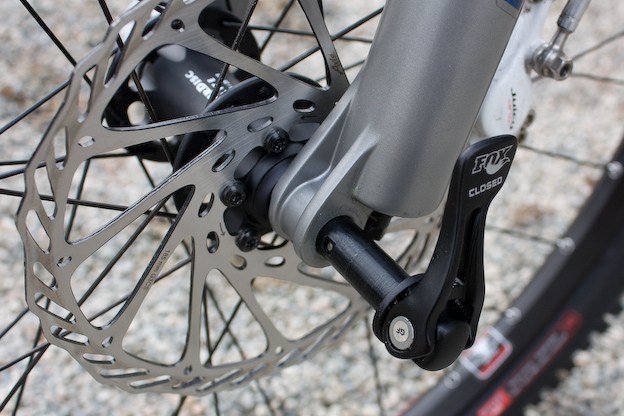
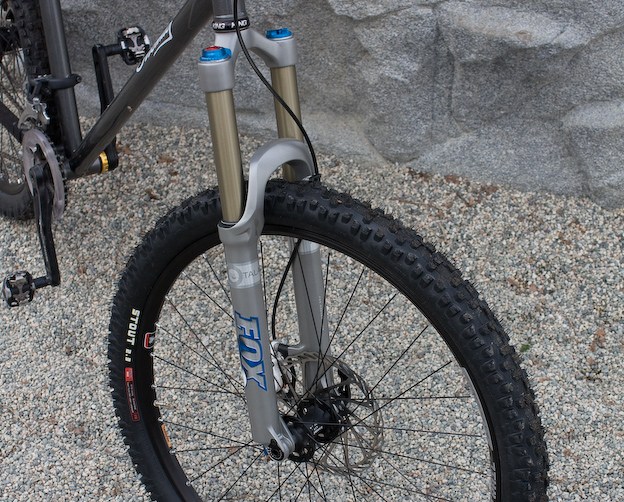
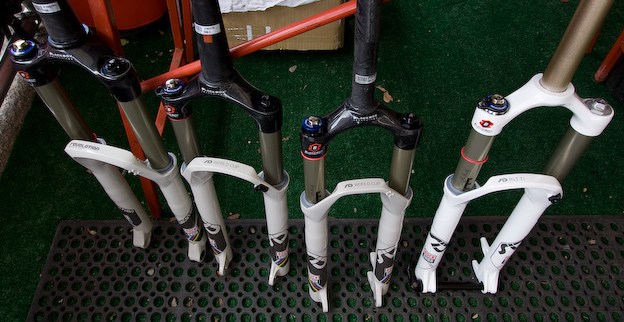
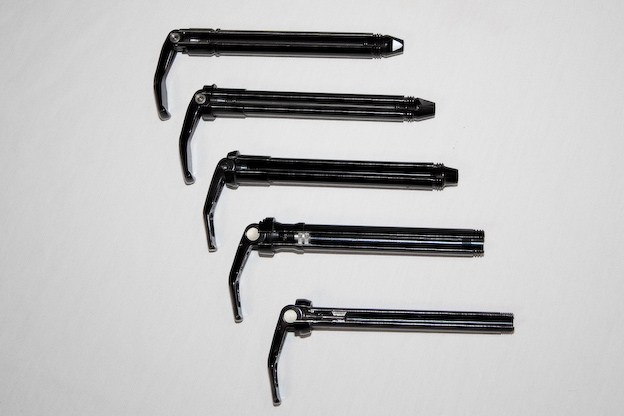
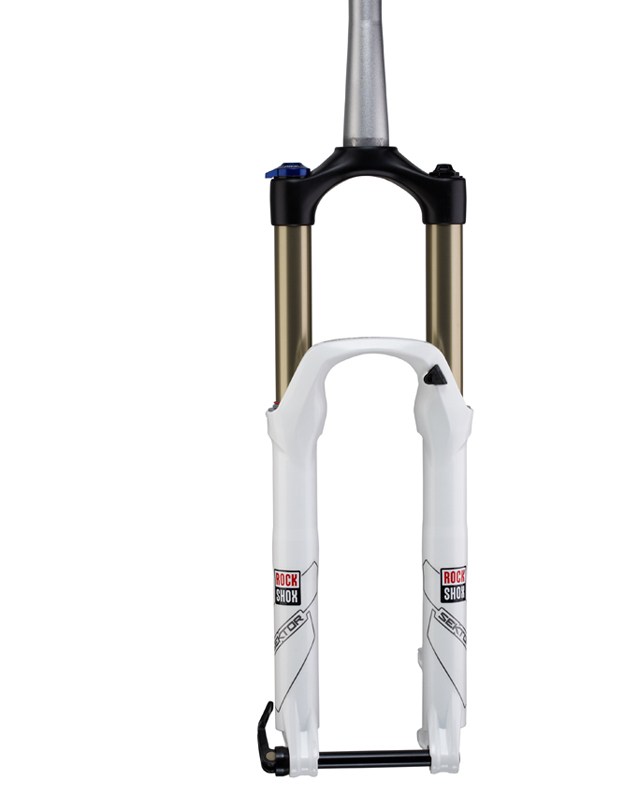







Comments
Please log in to leave a comment.